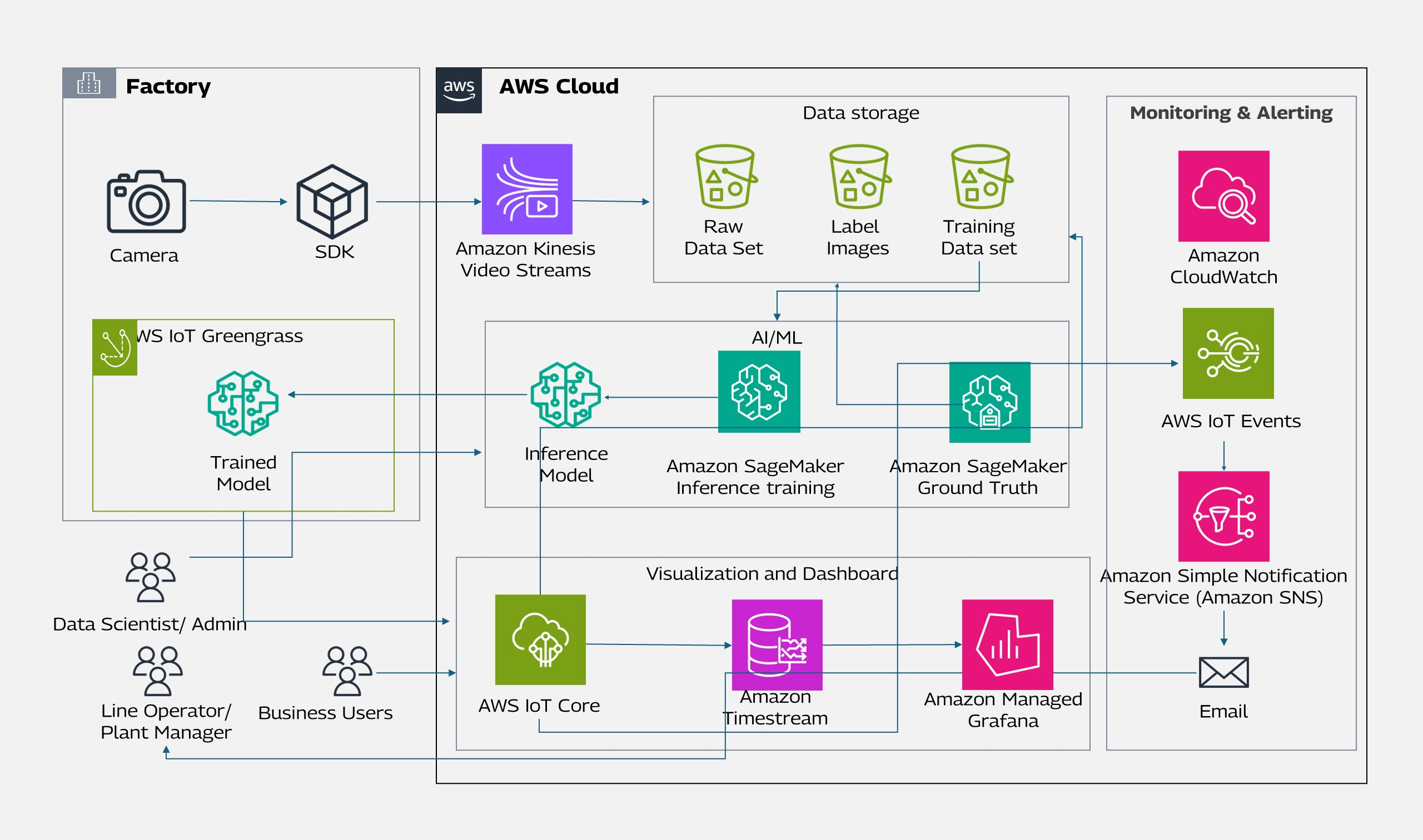Transform Manufacturing Quality Control with Computer Vision

Introduction
In the fast-paced competitive world of manufacturing ensuring product quality while maintaining efficiency is paramount. To maintain stringent quality standards, the traditional quality control methods often fall short due to their reliance on manual inspection processes. As the production process proceeds through various stages toward completion, delayed defects identification can significantly increase the cost of defects. The “Rule of Ten” suggests that the cost of correcting a defect increases tenfold at each subsequent stage of the production development cycle. Thus, it’s extremely important to identify defects in the early production cycles to reduce overall cost impact and, in extreme cases, total product recall.
To overcome challenges, improve productivity, efficiency, and customer satisfaction, an automated solution with machine learning (ML) models is required to detect anomalies in the manufacturing production line. Using Amazon Web Services’ (AWS) computer vision at the edge, companies can detect defects thus improving product quality and reducing costs.
Computer vision and ML-based solutions can revolutionize manufacturing inspection by automating defect detection, leading to improved inspection process, reduced errors, and visibility into the manufacturing chain. These technologies automate extraction, analysis, classification, and understanding of useful information from images and videos. To achieve optimal performance, deep learning models require extensive datasets of images and videos for training.
Insight and visibility into the manufacturing process can be further improved by implementing dashboards, notifications, and alarm systems at different stages. Let’s explore the architecture and components of these solutions.
Architecture
The below architecture illustrates the components for building CV at Edge solutions


Figure1: Architecture components for building CV at edge solutions
Components
Visual data collection and preparation
This step involves identifying and setting up cameras to auto upload training images from the manufacturing line to Amazon Simple Storage Service (Amazon S3).
Amazon Kinesis Video Streams helps securely stream video data from these connected devices to AWS for further processing. The raw data set is stored in Amazon S3, then prepared and labeled for training. To make the trained model more robust to variance, the data is then augmented.
Subsequently, Amazon SageMaker Ground Truth can be used to label training images and identify defects.Data augmentation in computer vision involves broadening a dataset by altering images through cropping, flipping, rotating, scaling, and adding noise. This exposes the model to more variations, enhancing performance and generalizability. Customers can utilize Amazon SageMaker for executing data augmentation processing jobs.
Machine Learning Model
Developers and data scientists use Amazon SageMaker to build, train, and roll out machine learning models. Using Amazon SageMaker’s pre-built or custom image processing algorithms, the models can be trained for image classification, object detection, and computer vision.
To address specific business needs, an ML model training pipeline can be set up to train new models or fine tune the pre-trained models.
Edge deployment
AWS IoT Greengrass compiles, optimizes, packages, and deploys the trained model on the target device, as well as runs inference locally. The deployed model can be monitored and fine-tuned using AWS IoT Core and AWS Cloud services. AWS Cloud services, such as Amazon CloudWatch, Amazon S3, and Amazon SageMaker, can be used to analyze the inference performance, store the edge data, and retrain the model based on the feedback from the edge.
Utilizing ML models at the edge for automated quality inspection of products results in near-real time inference, safeguards against issues caused by external network disconnections, and reduces data transfer costs.
Visualization and Dashboard
Event data is ingested into the cloud using AWS IoT Core service facilitates secure communication between edge devices and the AWS Cloud, allowing inference results and device telemetry data transmission to the cloud. In order to traceback the root cause of defects and generate meaningful alerts for anomaly, and to provide a visual presentation for the business users, an Amazon Timestream database ingests the defect inference results and uses Amazon Managed Grafana for visualization.
Monitoring and Alerting
Notifications using Amazon Simple Notification Service help manufacturing operators act quickly on identified defects, and their customers can utilize Amazon CloudWatch for real-time monitoring and observation of service resources.
Conclusion
Ensuring product quality and identifying defects during the early stage of production is crucial for lowering production costs and increasing customer satisfaction. That said, human quality control is subjective, inconsistent, and susceptible to mistakes due to fatigue, distraction, or lack of knowledge, increasing the likelihood of delays and disputation in the assembly line. Therefore, it is imperative to leverage the power of machine learning and edge computing to automate and improve the quality inspection process. Using Amazon SageMaker and Amazon Greengrass, manufacturers can build and deploy custom models that can detect surface defects in real time, with high accuracy and low latency. With reduced cost of human errors and risks, quality, and efficiency of the products is enhanced, thus increasing customer satisfaction and loyalty.

Ramandeep Kalear is a Solution Architect with around 17 years of experience. She supports clients in designing, implementing, and optimizing their cloud infrastructure using best practices and industry standards. She holds several AWS certifications, including AWS Certified Solutions Architect - Professional and AWS Certified Advanced Networking.

Amit Kumar is a Senior Partner Solutions Architect with Amazon Web Services. He works with the customers to provide guidance on enterprise cloud adoption, migration, and strategy. He also empowers customers in architecting and building scalable, highly available, optimized, secure, and cost-efficient solutions to meet business objectives.








